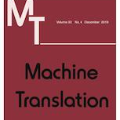Translation into severely low-resource languages has both the cultural goal of saving and reviving those languages and the humanitarian goal of assisting the everyday needs of local communities that are accelerated by the recent COVID-19 pandemic. In many humanitarian efforts, translation into severely low-resource languages often does not require a universal translation engine, but a dedicated text-specific translation engine. For example, healthcare records, hygienic procedures, government communication, emergency procedures and religious texts are all limited texts. While generic translation engines for all languages do not exist, translation of multilingually known limited texts into new, low-resource languages may be possible and reduce human translation effort. We attempt to leverage translation resources from rich-resource languages to efficiently produce best possible translation quality for well known texts, which are available in multiple languages, in a new, low-resource language. To reach this goal, we argue that in translating a closed text into low-resource languages, generalization to out-of-domain texts is not necessary, but generalization to new languages is. Performance gain comes from massive source parallelism by careful choice of close-by language families, style-consistent corpus-level paraphrases within the same language and strategic adaptation of existing large pretrained multilingual models to the domain first and then to the language. Such performance gain makes it possible for machine translation systems to collaborate with human translators to expedite the translation process into new, low-resource languages.
翻译:暂无翻译



